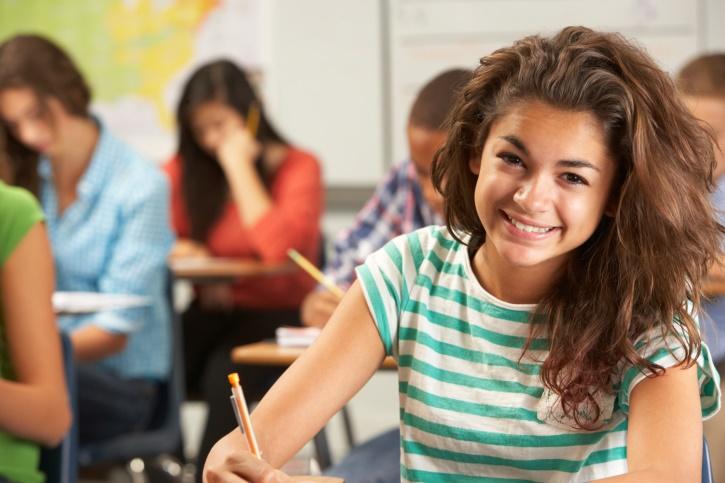
Credit: ThinkStock
Newsflash: Our nation remains conservative regarding matters of sexuality (damn those Puritanical roots). Case in anecdotal point: I happen to live next to a nudie beach, and—let me tell you—watching parents realize that penises are within eye range of their precious little babies is just about the funniest thing ever. This discomfort, however, is usually less about the kid's innocent eyes, and more about the unease of the grown-ups, who often run off before their little ones can finish asking a question.
If parents feel uneasy explaining nudists, how are they supposed to guide their kids through sexual changes in adolescence? Surely there must be a way to integrate sex ed at school and at home to ensure proper understanding . . . without making everyone feel incredibly awkward?
Enter Planned Parenthood's sex ed program, Get Real. Though relatively new (and practiced in only 150 schools in Massachusetts, New York, Rhode Island and Texas), studies are already showing positive results. Research found that schools where Get Real was taught ended up with 15% and 16% fewer girls and boys (respectively) engaging in sex by the end of 8th grade.
But how?
Anatomy Of A Successful Sex Ed Program
The program is pretty involved, with separate curriculums for middle and high school students. Both, however, delve into the emotional components of sex (and relationships in general) and—here's the kicker—require parental participation at home as well. The kind folks at Planned Parenthood send a newsletter to parents with updates about the curriculum and advice on how to discuss the topics with their rapidly-maturing kids. Orientations are also held for parents, to encourage further participation.
So it would seem there's significant value in breaking down the barrier between parents and teens when discussing sex. Who knew?
Oh, and sorry abstinence-only advocates, but the program also seems to have found success by not sticking to a no-sex-or-bust approach; while middle school students are taught that they should wait to have sex, high school students are educated on healthy sexual behavior should they choose to engage in it.
According to the site, the following is discussed in an "age appropriate" matter for junior high students:
•Communication and refusal skills
•Relationships and boundaries
•Male and female anatomy and reproduction
•Puberty
•Decisions about sexual behavior, with a focus on abstinence
•Media literacy and sexuality
•Sexual identity
•Sexually transmitted infections
•Protection methods
•Goals and decision making
High school students, on the other hand, learn about these topics:
•Decisions about sexual behavior, including abstinence
•Sexually transmitted infections
•Protection methods
•Gender and shared responsibility
•Relationships
•Accessing sexual-health care
A thoughtful, well-rounded sex ed program that works? Sounds good to us. Now here's hoping more states get on board soon.






